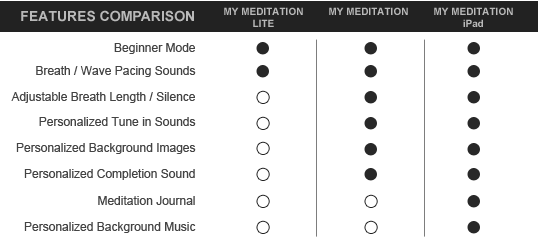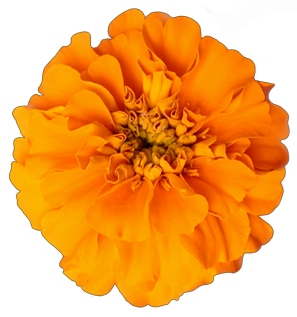
OVERVIEW
WELCOME TO MY MEDITATION
This is a modern way to engage an age-old practice. With a fully customizable interface, this app is designed to demystify meditation and help you with every step of your practice. Just a few minutes of guided deep breathing can quiet your mind, bring clarity and creativity to your thoughts, and instill a peaceful and healthy influence on your wellbeing.
Whether you’re a beginner or an expert, myMeditation will guide you through the entire process: set up, breathing, and silence.
Begin by committing your undivided attention to this exercise. Get comfortable. You can sit in a chair, lie down on the floor, or even walk if you should so please. If you choose to sit, do so with your back straight. If you are going to recline, lie with your feet roughly a foot apart, and place your hands at your side with your palms facing up.
PREPERATION:
Set up: Adjust the amount of time you need to prepare for meditation. Allow yourself a moment to get situated comfortably.
Tune In Sound: Select a sound you would like to hear to begin your session. Using the “Record Your Own” button, you may record up to 3 tune-in songs. Or choose from our pre-set collection:
- Bell
- Long Om
- Om Shanti Shanti Shanti (sung by Puiya Swami Chidanand Saraswati ji, a Spiritual Guide of Rishikesh, India).
Session:
Length: Select the duration of your guided breath work, which is also known to yogis as Pranayama. Pranayama is a Sanskrit word meaning “lengthening of the breath.” The word is comprised of Sanskrit words prana, meaning life force, and yama, meaning breath control.
Slow, full breaths are the foundation of a focused meditational practice. We tend to breathe shallowly, keeping our breath at the top of the lungs. Pranayama depends the breath, allowing the lungs to deliver more oxygen to your system, thus relaxing the body. This oxygen-enriched breath is involuntarily taken while in deep slumber – the body’s natural restorative time. We recommend a ratio of 3:1, such as 3 minutes of breath work followed by 1 minute of silent meditation.
Breathing Pattern: Enter times for your inhale, inhale hold, exhale and exhale hold. Allow for a slight pause in your exhale hold time to anticipate your subsequent inhale. You have the choice to follow an audible breath or musical tone.
Many schools of meditation have different views on breath patterns. Some aim to achieve a balanced yogic breath of 20 seconds each for inhaling, holding and exhaling; this takes much practice. You can set your own goal based on what works for you.
You may choose to begin with a pattern of 4-4-4 (4 seconds inhale, 4 seconds hold, 4 seconds exhale). Some instructors recommend exhaling twice as long as the other phases (4-4-8), or inhaling twice as long as the other phases (8-4-4). Try a few different approaches to find what is comfortable.
Please Note: You should not feel that you are suffocating or straining at all. You should not feel any tension in your neck or your head. If you are choking or coughing, you are straining too much. Any pattern above 8-8-8 should be done under the guidance of a yoga or meditation instructor. The goal is to clear the mind through a relaxing pattern. You should not be fighting a war.
Silence: Choose the length of your period of silence. Return to normal breathing during this time and allow your body to enjoy a rush of oxygen through your system.
Completion Sound: Select the sound you would like to hear at the conclusion of your session. You may record up to 3 sounds using the “Record Your Own” feature, or choose from pre-set options.
Image: For inspiration, you may select a background image from our library, or choose one of your own.
When you have completed your settings, select “Back” at the top left hand corner of your screen. Then select “Home” to begin.
Start: Some prefer to begin by tensing each part of the body before letting go. Start with your feet, and move upwards through your legs, torso, arms, hands, neck and face. Tense each muscle group for a second or two before relaxing them back into position. Close your eyes.
After the tune-in sound, the breathing pattern will begin. Allow your breath to flow naturally to the rhythm of the inhaling and exhaling sounds. Yogic breathing is deep breathing. Your breath should originate from just below your navel, inhaling through your nose. Keep your mouth relaxed and closed. Use your breath to fill your abdomen and expand upwards through the lungs and chest. Inhale slowly and fully, letting waves of breath wash over your body. Exhale fully, drawing the navel towards the spine. If thoughts arrive, say hello, and let them go.
This app was created by BLT Helps, a non-profit organization dedicated to providing graphic arts services and human resources to charitable organizations in need. 100% of proceeds will benefit design services and training for fellow non-profit organizations. You can follow BLT Helps on Facebook.


